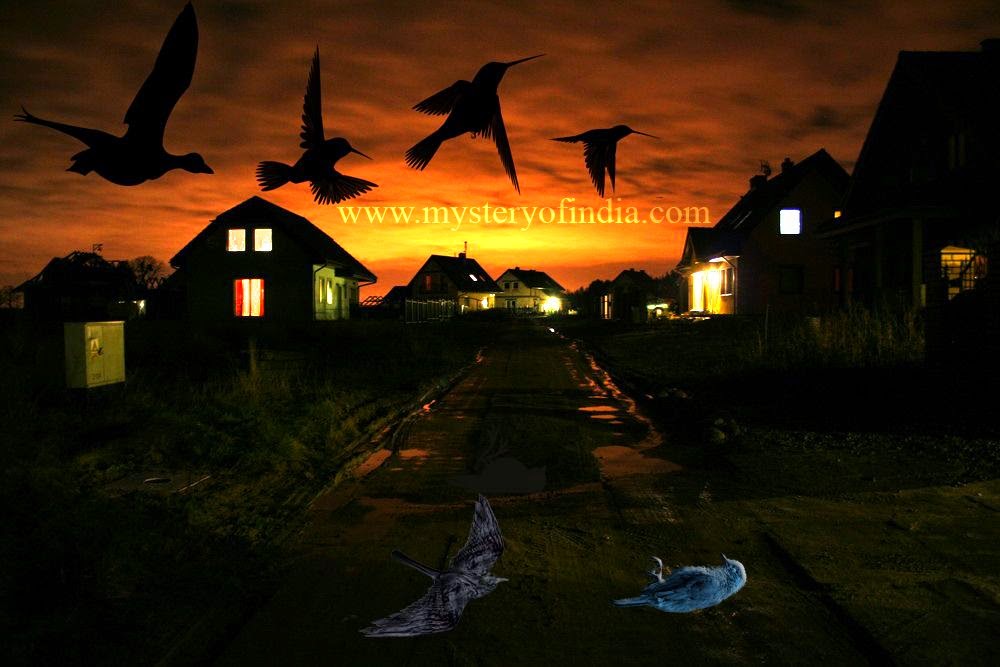Jatinga is a village on a ridge, is located in Dima Hasao District, Assam State in India. It is 330 km south of Guwahati. The village is inhabited by about 2,500 Khasi-pnar tribal people and few Dimasa people. This small Village is famous for the phenomenon of birds “committing suicide”. Over the last 100 years, thousands of birds have flown to their death over a small strip of land in Jatinga, India.
The Bird Suicide Mystery is a unique phenomenon that occurs at Jatinga between September and November each year. During these late monsoon months, several migratory and local birds commit mass suicide at the village. Just after sunset, between 7 and 10 pm, hundreds of birds descend from the sky, plummeting to their deaths by crashing into buildings and trees. Since birds aren’t known to be suicidal, the phenomenon has baffled villagers, visitors and scientists alike.
Many ornithologists have dedicated their time in research of this unnatural phenomenon. They have found that there are many species of local birds such as Kingfishers, Pond Heron, Black Bittern, Tiger Bittern, etc. are subjected to such strange behaviour. Studies have also revealed that the birds commit suicide in Jatinga during the late monsoon as most of the water bodies in Assam are flooded by that time. The birds lose their natural habitat. So they appear to be migrating to other places, and Jatinga is in their migratory path. But it isn’t clear why the birds fly at night, or why they get voluntarily trapped at the same place every year.
In 1988 when Assam faced severe floods maximum number of bird suicides was reported in Jatinga. Some of the long distance migratory birds are not affected by this phenomenon.
Curiously, most of the doomed birds do not attempt to fly away after they land near the lights. They look dazed and disheveled, perhaps due to the trauma of the whole shocking experience. Such birds fall easy prey to the villagers. Some of the birds hovering around the light sources are brought down by a vigorous swing of the bamboo poles. Catapults are also used to bring down the birds in flight as well as those perching on the trees and bushes near the light sources. However, contrary to the popular belief, birds do not commit suicide. Under circumstances not yet fully explained, these birds get caught in the fog and wind, get disoriented and seek solace of the light sources put out by the villagers. They hit against trees or other objects and get injured in their flight towards the light source. The villagers hit the hovering birds with bamboo poles or catapults to bring them down.
Studies also show that the birds come in only from the North and land only on a well-defined strip in the village – that’s 1.5 km long and 200 meters wide. Lights placed along the southern side of the village have failed to attract any birds.
“It is not suicide, to be precise,” said Anwaruddin Choudhury, a well-known ornithologist in Assam. “But the fact remains that birds are attracted by light and fly towards any object with a light source. This phenomenon still puzzles bird specialists.”
The phenomenon of ‘avian harakiri’, as the locals call it, was first observed by the Zeme Nagas, the inhabitant tribe of the region in the early 1900s. It frightened them so badly that they sold their land to Jaintias and left the place in 1905. The new inhabitants also observed the phenomenon, but interpreted it as a gift from God.
The Jaintias aren’t entirely wrong. After all, the phenomenon has captured the interest of wildlife circles and tourists, making the village of Jatinga world famous. The birds alone are responsible for a boost in tourism during the monsoon months. And they’re quite delicious; locals relish these exotic delicacies. The villagers deliberately switch on lights and lanterns to attract the birds and capture them every year.



